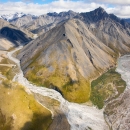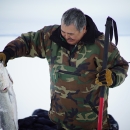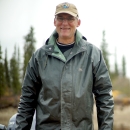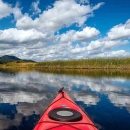In the spring of 2004, thawing permafrost caused a large landslide (slump) in the upper Selawik River within Alaska's Selawik National Wildlife Refuge. As the slump grew it discharged tons of sediment upstream of the Selawik sheefish population's spawning grounds. This fish is an important Refuge fixture and year-round subsistence food for the Inupiat people living in the Selawik/Kotzebue region. In cooperation with the Native Village of Selawik, and the Refuge, our Fairbanks Fish and Wildlife Conservation Office and Selawik National Wildlife Refuge launched this study in 2011 to annually assess the slump’s effect on the make-up of Sheefish ages and number of spawners. This study is ongoing given the long-lived nature of Sheefish and need to measure impacts to their recruitment over an appropriately length of time.
Monitoring, Research






